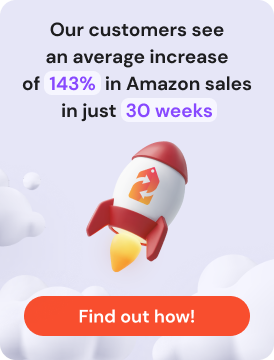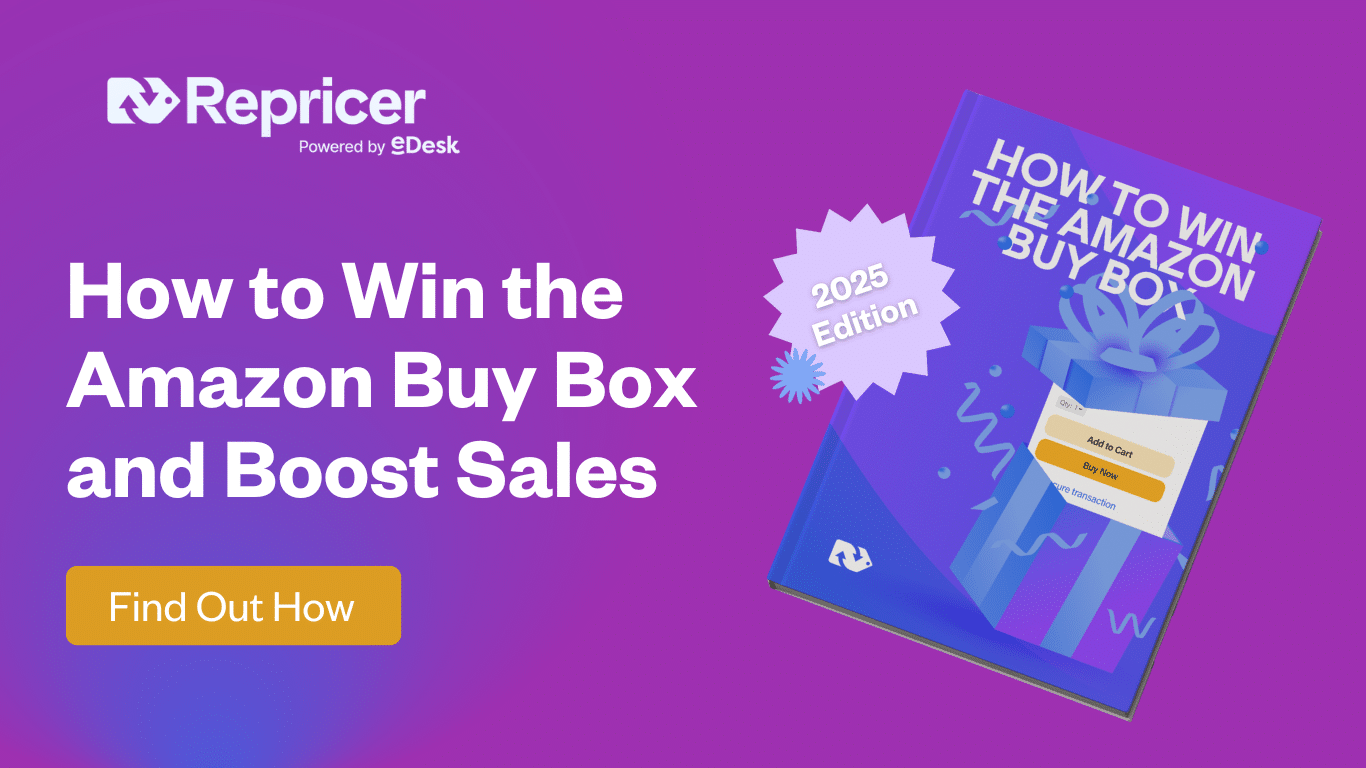There are more than 2 million active sellers on the Amazon marketplace. Let that number sink in. The competition to get the consumer’s attention has never been higher. One aspect of your sales strategy plays a more pivotal role than anything else in this regard; your Amazon product listings. Here are 3 key steps to Amazon listing optimization.
Choosing the right keywords
More than 60% of U.S. consumers start their product search on Amazon. That means keywords should play a crucial role in your marketing strategy to ensure as many customers as possible find you.
How do you go about choosing the ones with the most value?
Successful Amazon listing optimization starts with identifying the keywords your customers are searching when they’re ready to make a purchase. You can use the marketplaces search toolbar as an initial guide. When you type a word in the search bar, Amazon provides you with suggestions based on previous customer searches. This is a great way to get an idea of what shoppers are searching for so you don’t miss any valuable keywords.
Third-party tools such as Google’s free Keyword Planner are a great way of finding lucrative keywords.
Enter different search terms related to your product, go through the list of suggested keywords and put any that may be relevant in your hidden search-terms field.
You can also save keyword lists related to your products by downloading the data that Google gives you into spreadsheets and sorting by search volume for future reference.
Include your most important keywords in your product title and pepper them around your product page listing (e.g. in bullet points and the description) so that Amazon knows your product is relevant for someone searching with that keyword.
Proving your value to Amazon
Here’s Amazon’s own statement regarding its algorithm and how to optimize your listing to win in their search results.
“Our work starts long before a customer types a query. We’ve been analyzing data, observing past traffic patterns and indexing the text describing every product in our catalog before the customer has even decided to search”.
Whilst Google’s search engine is designed to promote the best answer to a searcher’s query, Amazon’s A9 champions the products that it thinks customers are most likely to buy. Let’s put that another way; if Amazon doesn’t think your product is going to sell many units, then it’s not going to rank it highly.
Amazon’s mission statement is to match the consumer’s exact needs with the right product. This is why its SERPs show individual products, not the companies themselves.
There are four keys elements to proving your value on Amazon; 1) the relevancy of your product to the consumer, 2) convincing Amazon that your product will convert, 3) your ability to deliver the item on time and 4) consistently high feedback ratings. To win in Amazon we have to play by their rules, so these elements will need to be at the core of your Amazon listing optimization strategy.
Relevancy
When a visitor starts looking for a particular item, Amazon quickly decides how relevant your product listing is to that particular search. They make this decision based on a number of facts including titles, bullet-points and product descriptions, as well as the hidden-search terms we mentioned earlier. We will cover best-practice for each of these in more detail a little later.
Conversions
Amazon logs each product’s sales performance. It knows the historical conversion rate of each item on its website. Products that have sold well in the past will always be preferred to those that are new to the platform. This might seem unfair, but it makes sense. They are backing the horse with the shortest odds.
Changing a product’s average lifetime sales performance overnight is impossible, although there are a couple of steps you can take to give it an immediate boost.
You could lower the price of the item for a short space of time in order to quickly get some sales on the board. This will send a clear signal to Amazon that your product has significant value to the consumer and is worth pushing higher up the SERP. Just don’t forget to bring the price back up when that’s happened.
It also would make sense to utilize a repricing tool to help you win the Buy Box. This is where the vast majority of sales happen and competition for it is fierce. The most important measure for success of any Amazon listing optimization strategy is whether it drove more sales. Consistently getting your products in that prime location is a sure-fire way to achieve this.
An excellent fulfillment record
An exceptional shipping strategy has been one of the cornerstones of Amazon’s incredible growth. It is a key factor in why they’ve set themselves apart from the crowd.
They’ve put so much focus on it because of how important it is to the consumer. Ideally, Amazon would like every merchant selling through its marketplace to be FBA (Fulfilled by Amazon) so that it can guarantee fast delivery across the board (as well as make a tidy profit from the associated fees too of course).
Products that are FBA, therefore, rank higher than those outside of the program. Signing up for it could be a very wise move, provided you are selling the right kind of products. We have written a guide to the benefits and drawbacks here.
If you’d rather not sign up to this service, then it is still possible to improve the standard of your shipping to the extent that Amazon expects. You will need to scale up your order processing speed and minimize your order delays (if not eliminate them entirely). Offering free shipping will also provide a huge boost to your shipping in Amazon’s eyes. You can always increase the price of the product to offset this additional cost.
Customer Satisfaction
Meeting your SLAs is obviously paramount if you want to avoid those dreaded penalties. The seller metrics that Amazon has established are also important indicators of how good a service you are generally providing. That’s why it factors them into its SERPs.
It stands to reason that reducing the amount of negative feedback received (and earning more favorable reviews) needs to be part of your plan for Amazon listing optimization. A feedback tool can certainly help, targeting only customers that are likely to speak highly of you. To get the most benefit from it, however, you need to ensure that your customer support team is adequately trained to deal with a high volume of queries. Arming them with a purpose-built helpdesk can also significantly increase the speed and quality of their responses.
Amazon Product Page Optimization
Crafting the perfect title
It can be tempting to cram as many keywords as possible into your title, and perhaps in the past, there was a case to be made for doing so, but modern algorithms are too intelligent to be gamed in this way.
The title of the product must make sense. It shouldn’t read as though a robot has put it together based on a list of high-volume search terms. Include only the most important keywords, and only those that are exactly relevant to the item that you are selling. Misleading the customer is not going to do you any favors. In the short-term, it might generate more click-throughs, but optimizing your Amazon listing this way is not going to earn more sales.
Here’s how you can best utilize a product title.
- Use as many of the 250 characters available as you can.
- Write with the intention of being as clear as possible, not selling.
- If branded, including the brand name and manufacturer number first.
- Mention at least one value proposition that makes your product stand out.
- Spell out numbers and measurements (e.g. inches, pounds etc).
Choosing the ideal images
Including the main one, Amazon permits you to display 9 images per product. It’s certainly worth your while using all of that allowance.
The primary image that the customer sees is naturally the most important. Alongside the product title, it determines whether or not a viewer is going to click on your listing over a rival’s.
Image checklist.
- Have you used a white background? Amazon doesn’t permit anything else.
- Have you filled as much of the empty space as possible with your product?
- Is the image high quality? Ideally, images should be at least 1000 pixels in width and 500 pixels in length.

We recently teamed up with JungleScout CEO Greg Mercer to talk about creating the perfect images to help your Amazon listing optimization efforts. We covered every style of image you might need (including lifestyle, product, descriptive and comparative matrix) across a wide variety of product types. You can watch that presentation here.
“Silver” Bullet Points
In the key features section, you have a character limit of 1000 for your bullet points. As a rule of thumb, try to have no more than four or five. Once again, clarity and simplicity are our touchstones.
- Point out essential details/ features, starting with the most impressive/relevant.
- Mention materials and related attributes (machine-washable, bio-degradable, stainless steel etc).
- If there are warranties or guarantees this a good place to put them.
Writing A Compelling Description
Truthfully, the product description isn’t as important as other aspects of the listing, but that doesn’t mean it can’t optimize. All the more reason to make sure you’re getting maximum value from it.
You have 2,000 characters available to you, ample space to get across all of the reasons why a customer needs this particular item. Here you should draw out and expand upon some of the key features you highlighted in the title and the bullet points.
Some golden rules to follow.
- Keep the language simple. Unless it’s absolutely necessary (technical terms, legal disclaimers etc) make sure the sentences are easy to read and understand.
- On that same point, avoid writing unnecessarily long sentences.
- Begin with the product’s strongest feature. What must the customer know about this product, what is its most compelling attribute?
- Paint a picture for the customer of how much better their life will be having this product. Think of the product in terms of a customer’s problems and the solutions it offers.
- Feel free to drop in those keywords again (it’d be pretty hard not to, right?) but don’t over-do it. Readability is paramount.
By optimizing your Amazon product listings using these 3 tips you’re sure to see an uptick in traffic to your products.
Repricer.com is the ultimate Amazon repricing software available, enabling you to react instantly to changes in the marketplace and stay ahead of your competitors. Start a free trial today and win the Buy Box.









